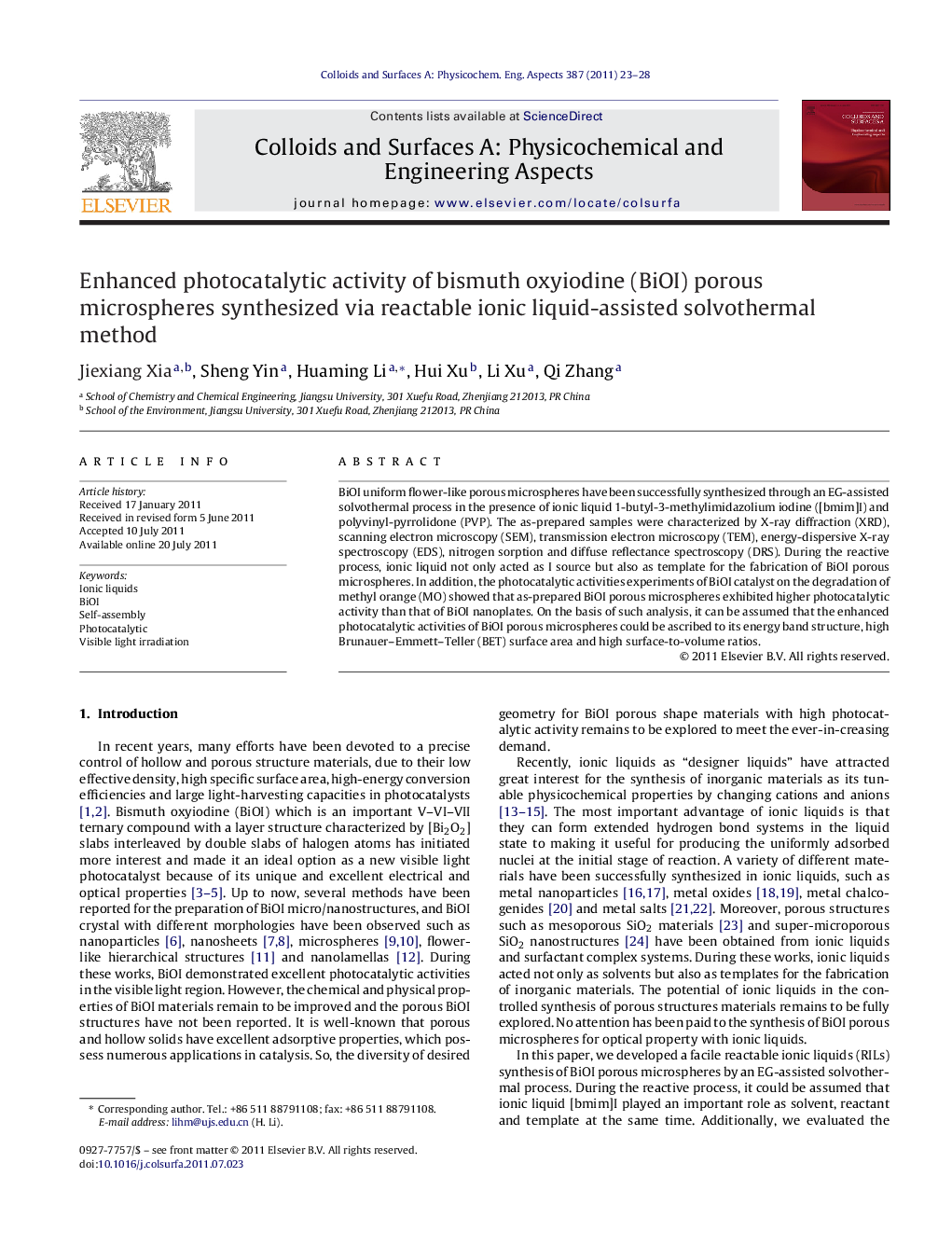| Article ID | Journal | Published Year | Pages | File Type |
|---|---|---|---|---|
| 594716 | Colloids and Surfaces A: Physicochemical and Engineering Aspects | 2011 | 6 Pages |
BiOI uniform flower-like porous microspheres have been successfully synthesized through an EG-assisted solvothermal process in the presence of ionic liquid 1-butyl-3-methylimidazolium iodine ([bmim]I) and polyvinyl-pyrrolidone (PVP). The as-prepared samples were characterized by X-ray diffraction (XRD), scanning electron microscopy (SEM), transmission electron microscopy (TEM), energy-dispersive X-ray spectroscopy (EDS), nitrogen sorption and diffuse reflectance spectroscopy (DRS). During the reactive process, ionic liquid not only acted as I source but also as template for the fabrication of BiOI porous microspheres. In addition, the photocatalytic activities experiments of BiOI catalyst on the degradation of methyl orange (MO) showed that as-prepared BiOI porous microspheres exhibited higher photocatalytic activity than that of BiOI nanoplates. On the basis of such analysis, it can be assumed that the enhanced photocatalytic activities of BiOI porous microspheres could be ascribed to its energy band structure, high Brunauer–Emmett–Teller (BET) surface area and high surface-to-volume ratios.
Graphical abstractIn this paper, we developed a facile reactable ionic liquids (RILs) synthesis of BiOI porous microspheres by an EG-assisted solvothermal process. During the reactive process, it could be assumed that ionic liquid [bmim]I played an important role as solvent, reactant and template at the same time. Additionally, we evaluated the photocatalytic activities of BiOI on the degradation of MO under visible light irradiation and found that porous BiOI structures exhibited higher photocatalytic activity than BiOI nanoplates. The relationship between the structure of the photocatalyst and the photocatalytic activities was also discussed.Figure optionsDownload full-size imageDownload as PowerPoint slideHighlights► A novel method has been demonstrated to the synthesis of BiOI porous microspheres in the presence of a reactable ionic liquid 1-butyl-3-methylimidazolium iodine ([Bmim]I) and polyvinyl-pyrrolidone (PVP). ► During the reactive process, ionic liquid [Bmim]I played the role of solvent, reactant and template at the same time, and was vital for the flower-like BiOI porous architectures. ► The obtained porous BiOI catalyst showed the higher photocatalytic degradation activities of methyl orange (MO) than other BiOI catalysts in the literatures under the visible light irradiation.
